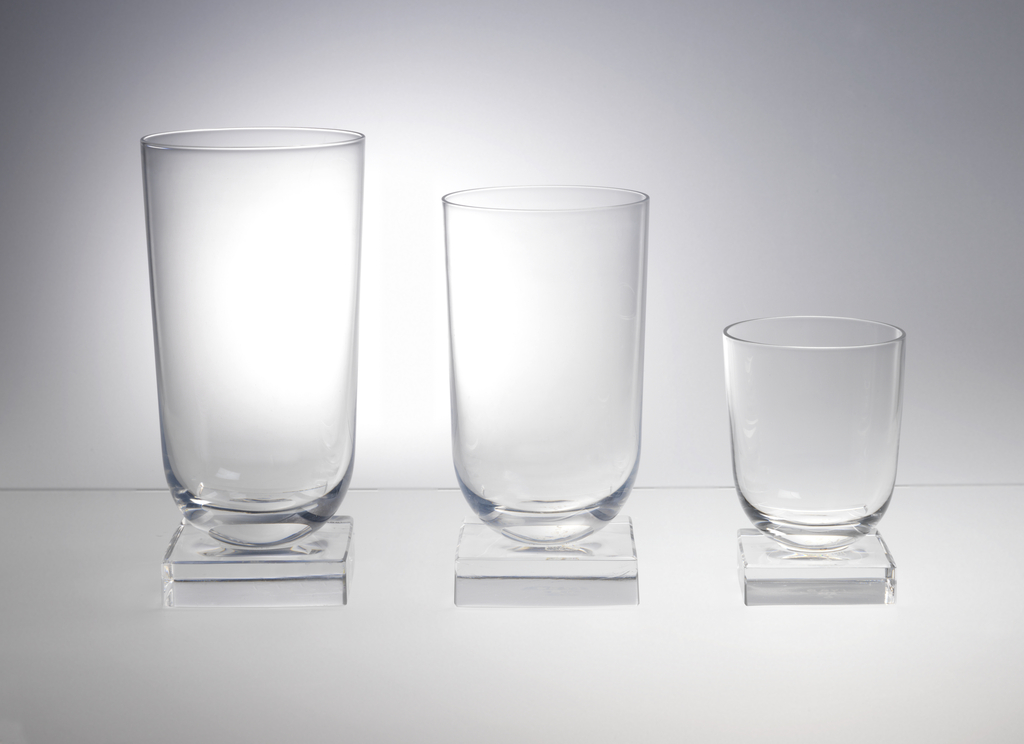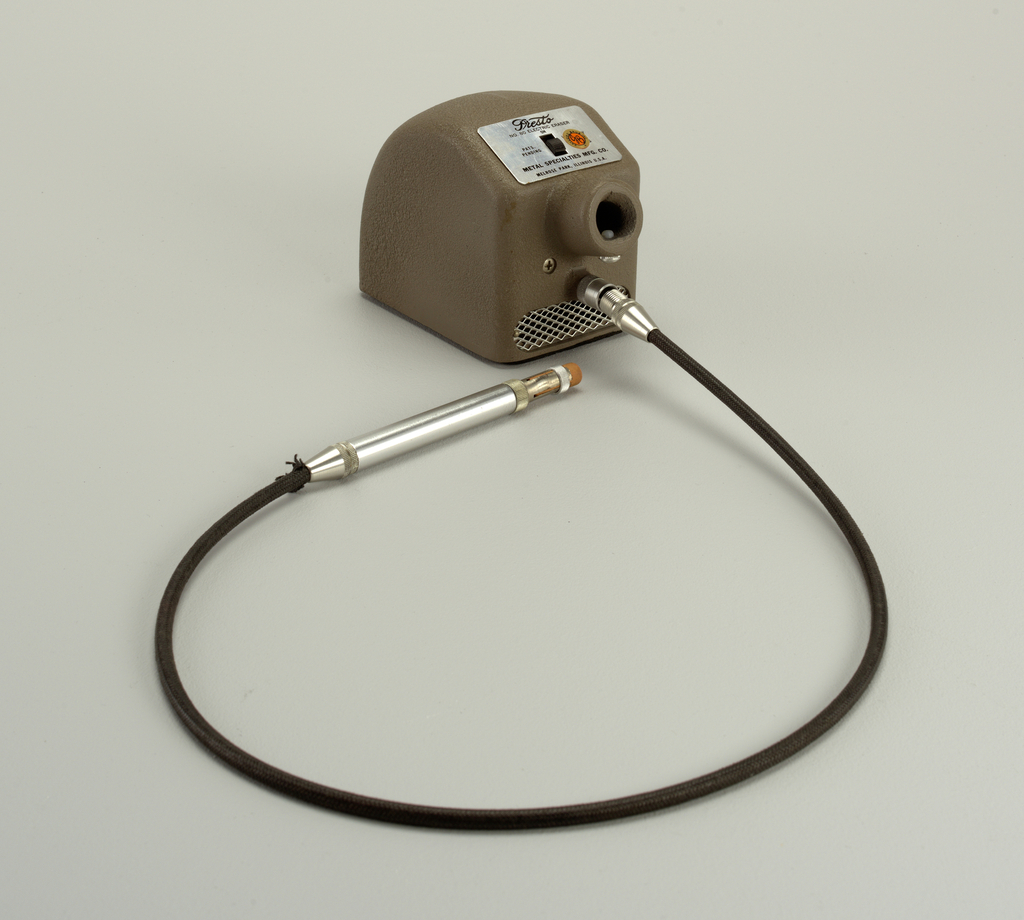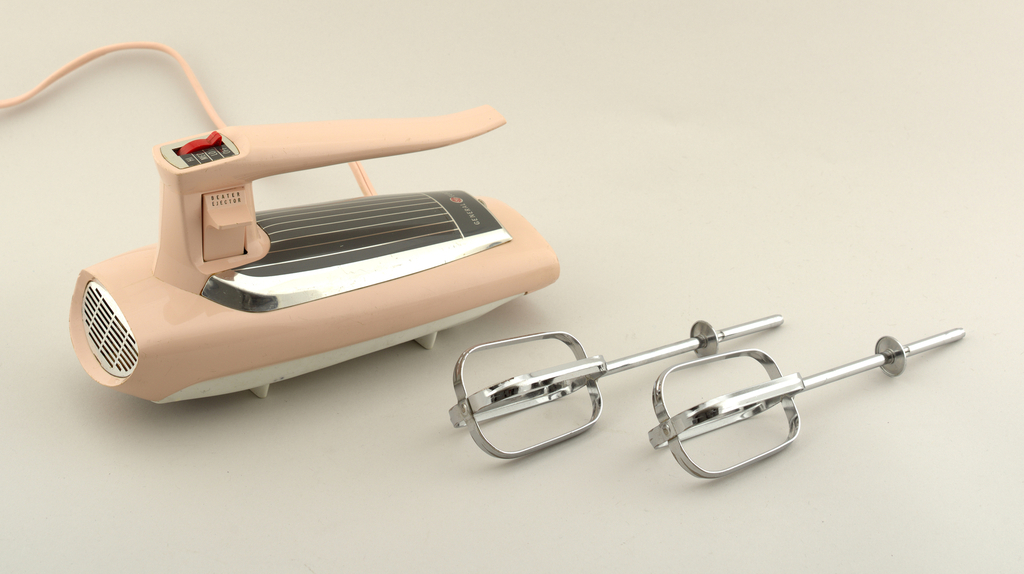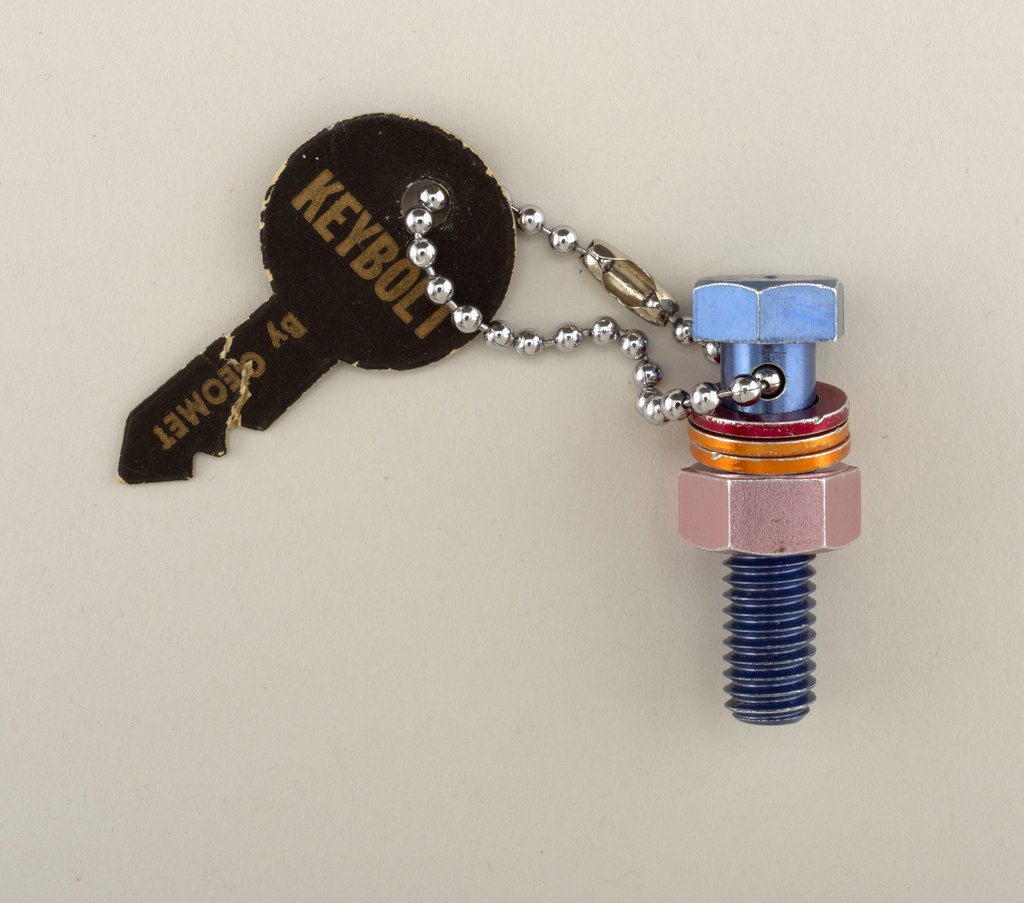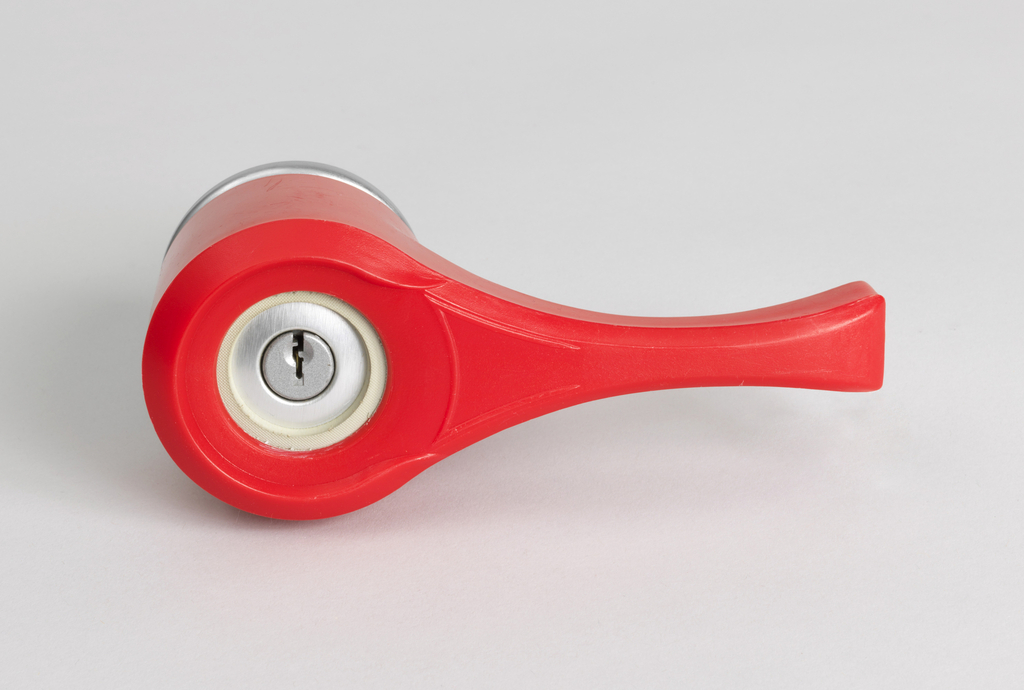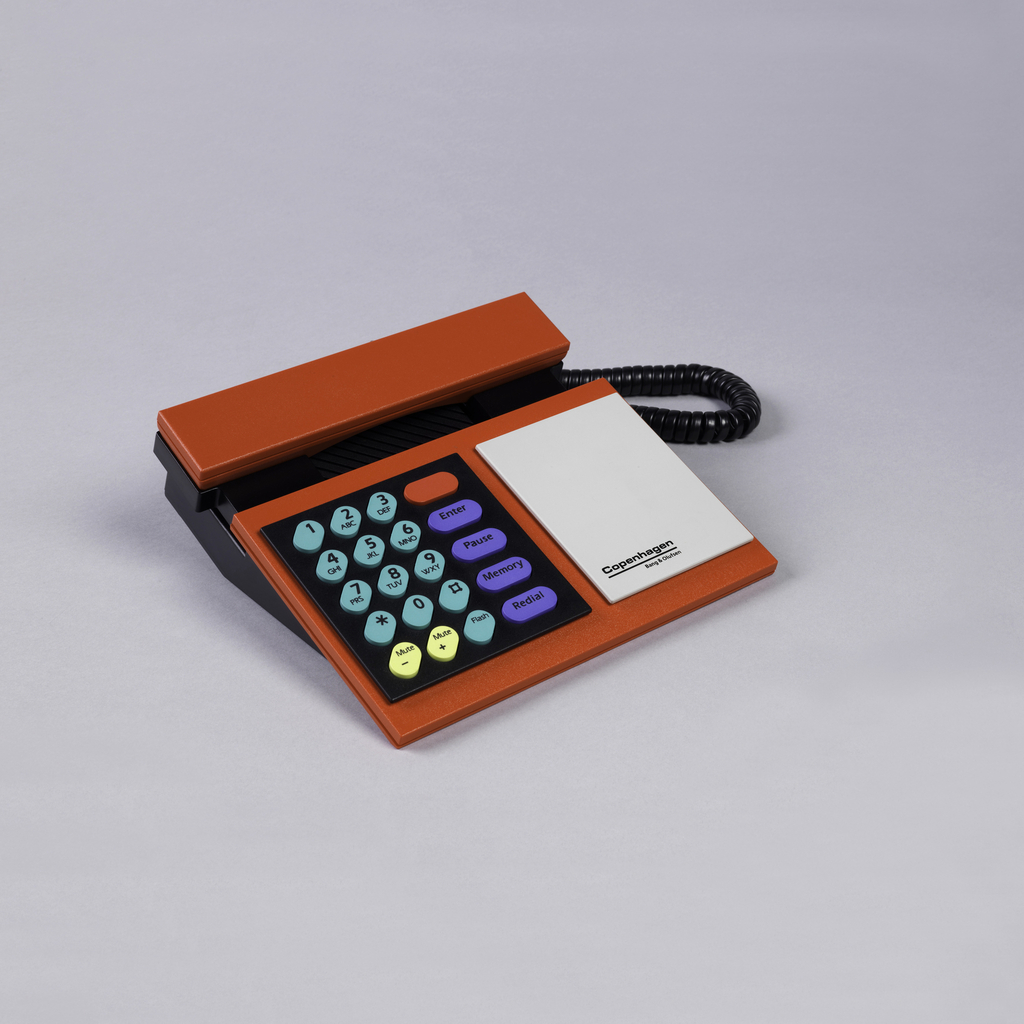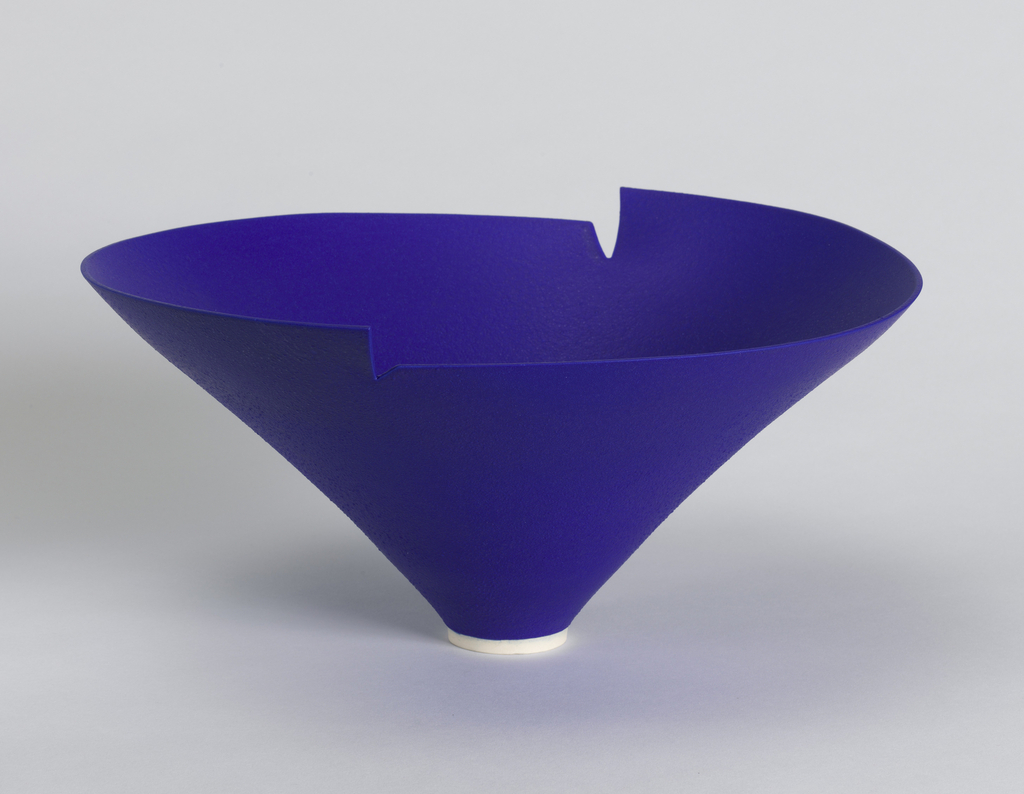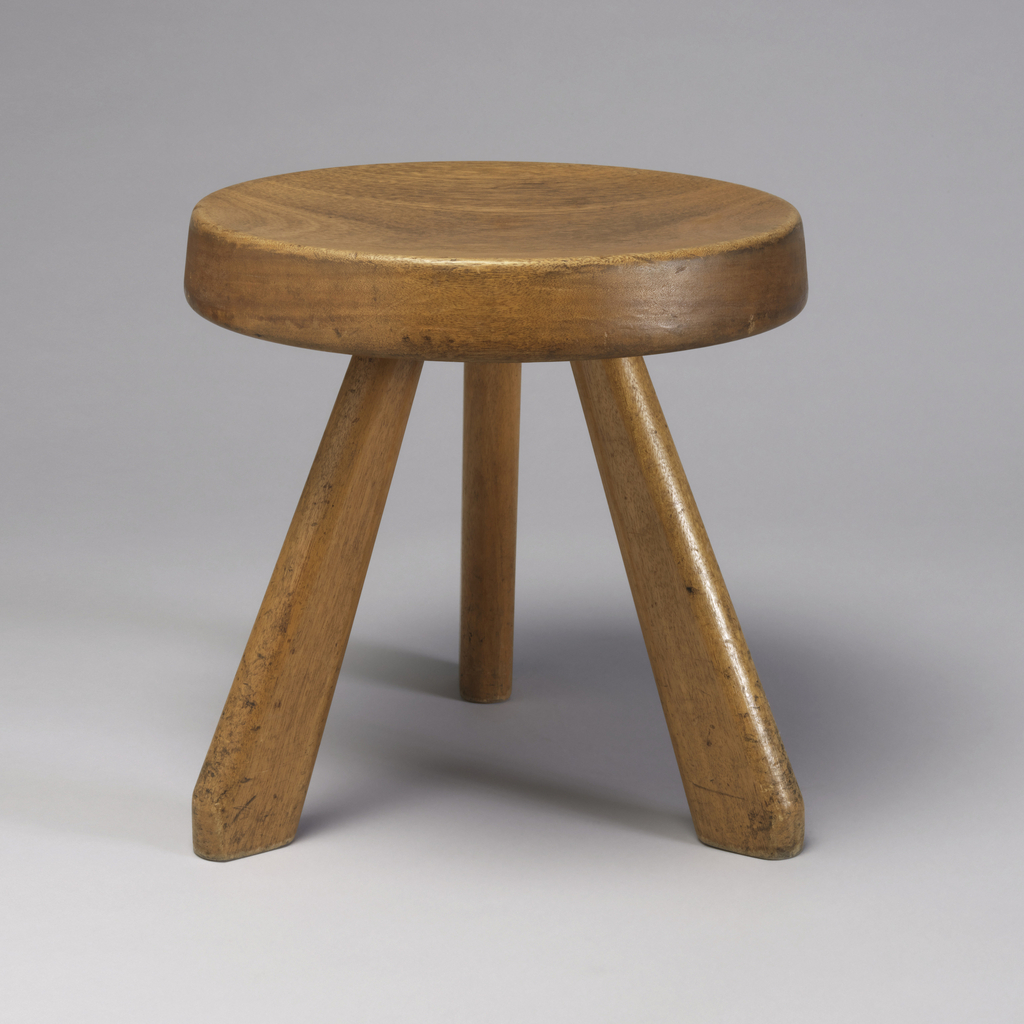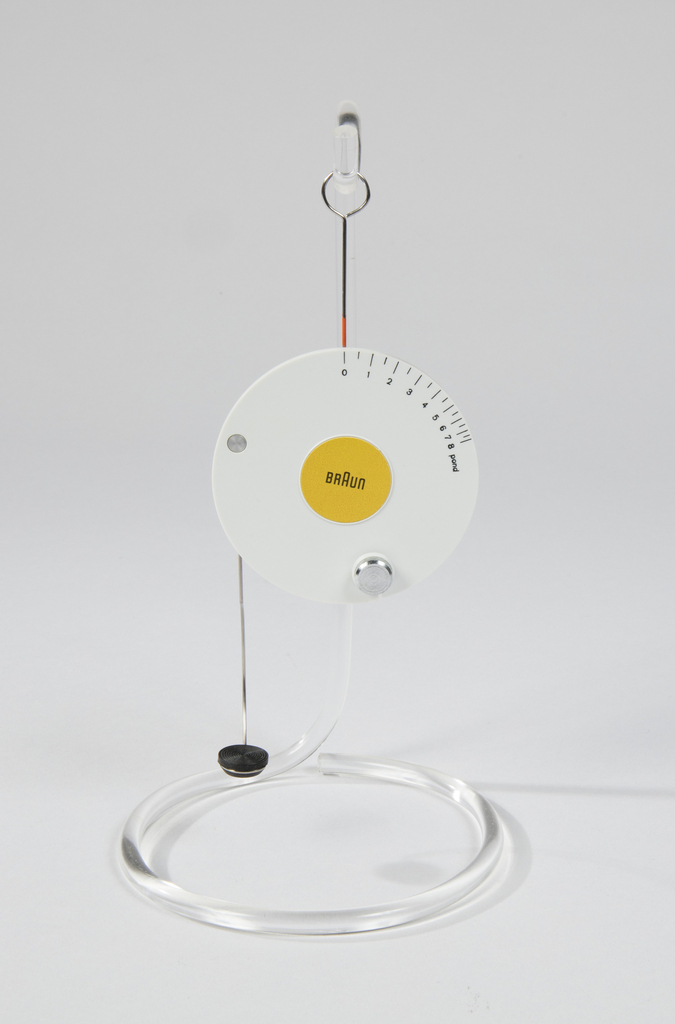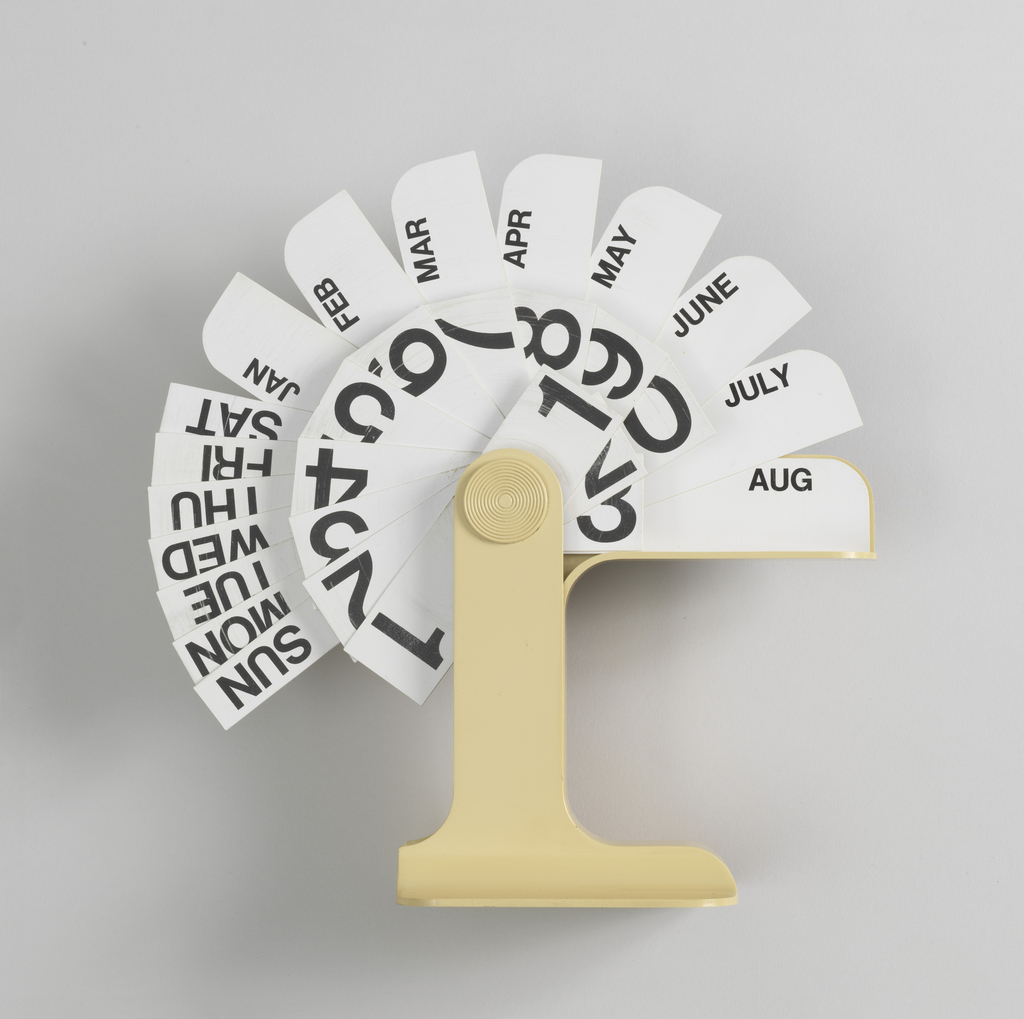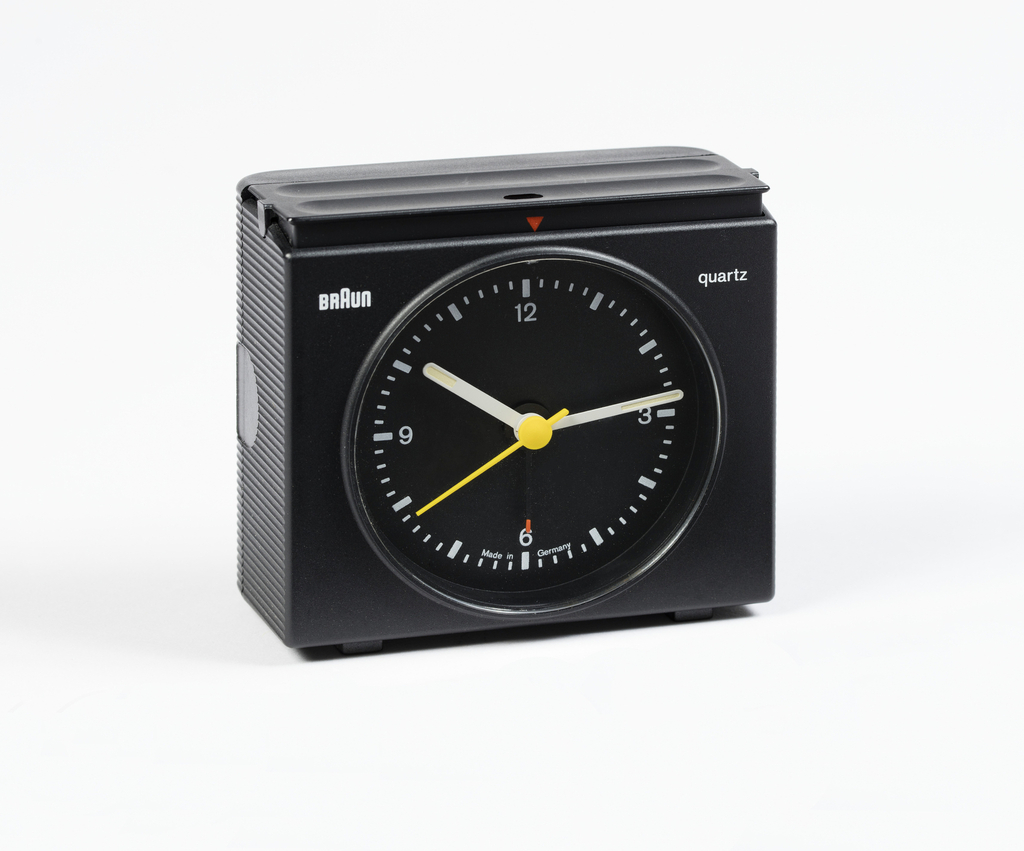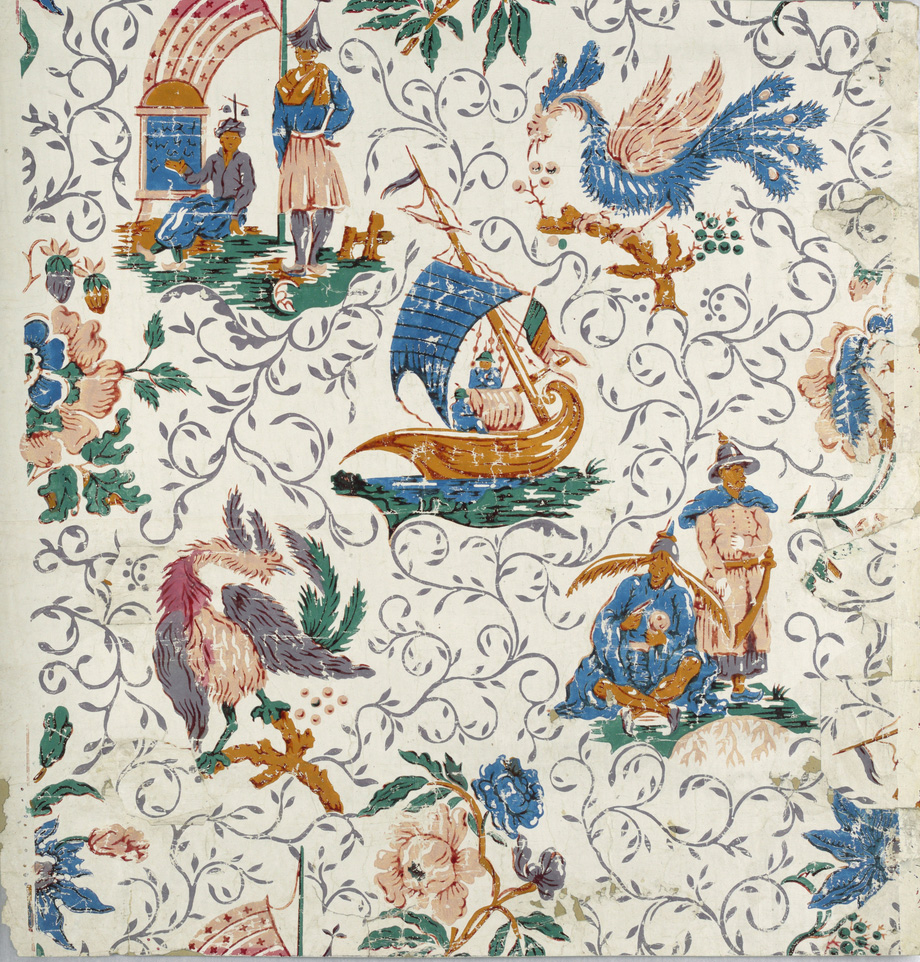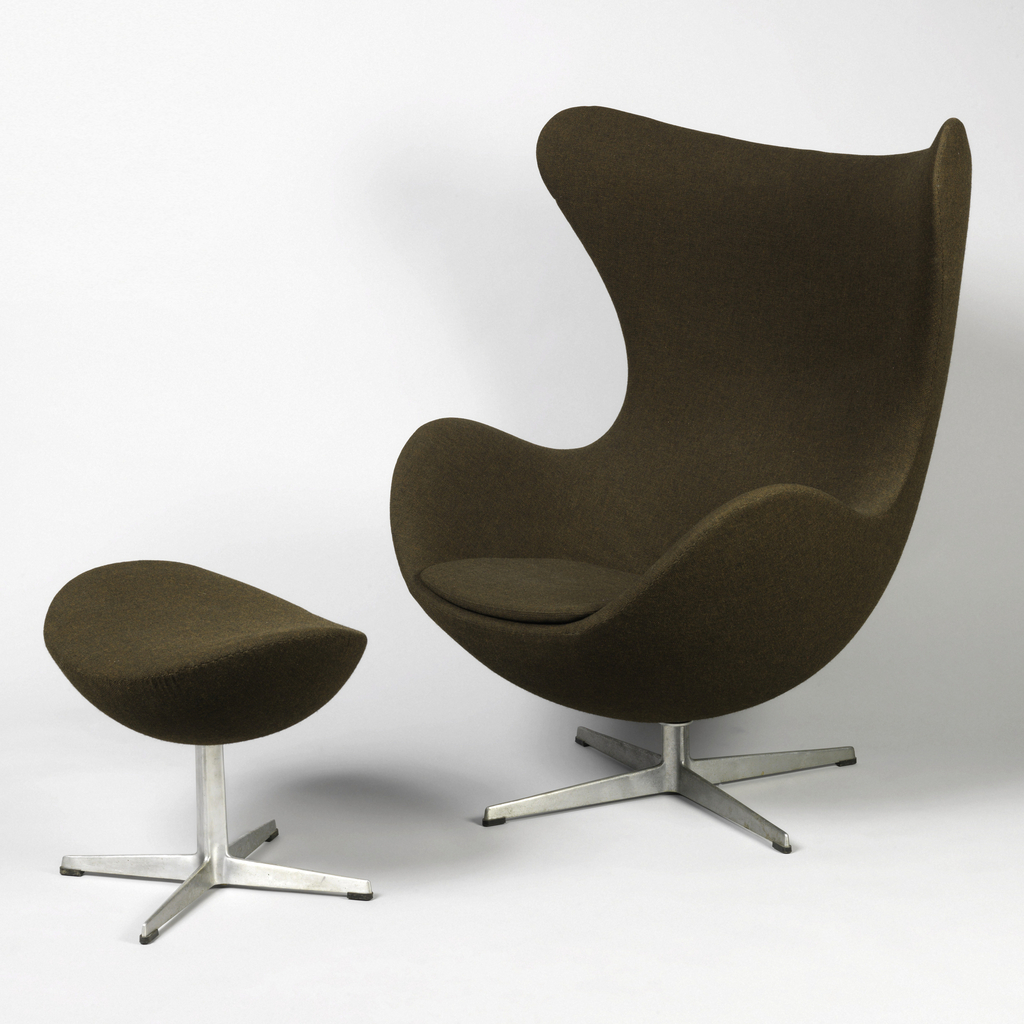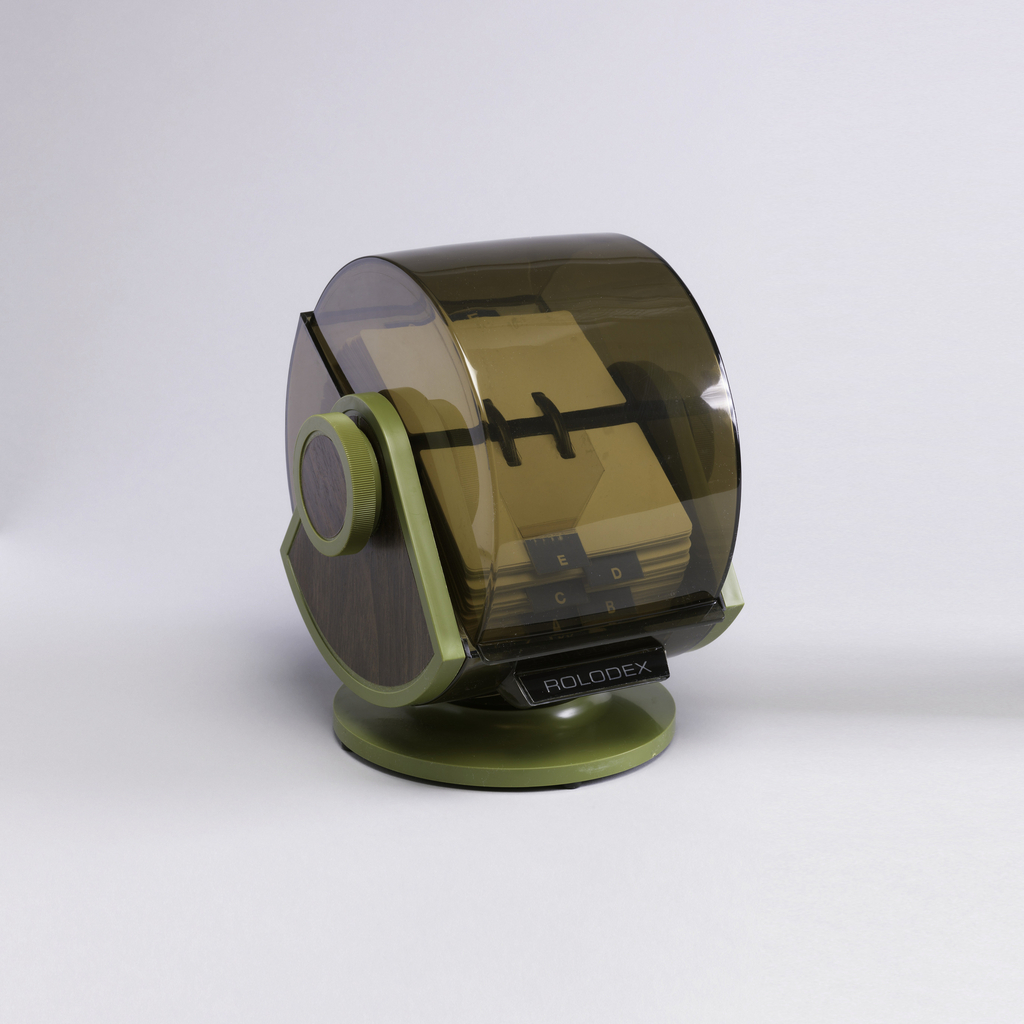During the height of the Great Depression, Libbey Glass Company, a commercial glass manufacturer based in Toledo, Ohio, released several new lines of stemware including this Knickerbocker set. The 1933 Libbey Glass catalog heralded this introduction of products as a “New Era of Glass” and promoted these objects as “the highest point that has yet...
The Illinois-based office supplies manufacturer Metal Specialties Manufacturing Company first released a line of “Presto” products in 1939. Originally the line only included pocket and desk-sized staplers, but the firm would eventually create a wider range of products such as this electric eraser. This relatively simple and nondescript device allowed the user to store the...
In 1955 General Electric released a line of kitchen appliances available in what they called “mix-and-match colors.” From canary yellow dishwashers to cadet blue refrigerators, one could construct an entire kitchen with G.E.’s colorful products. A two-page spread in Better Homes and Gardens from 1956 explained how one could entirely modernize his or her kitchen...
In celebration of Women’s History Month, March Object of the Day posts highlight women designers in the collection. A 1954 article in Women’s Wear Daily announced the arrival of Patricia Smith’s novel jewelry designs, noting, “highly colored, glamorized nuts, screws, bolts and other industrial products make unusual anodized aluminum jewelry by the new firm of...
Émile-Jacques Ruhlmann, the designer of this commode, produced a number of luxury furniture pieces throughout the 1920s and early 1930s that represent the pinnacle of French Art Deco design. His work often imbued historical cabinetmaking techniques and forms with a vibrant and modern spirit. Though he achieved notoriety for his furniture, his firm also produced...
Since the early 1980s, around the time of this door knob attachment’s production, designers and engineers have been particularly attuned to the physical, psychological, and emotional needs of users during their interactions with everyday things. This design approach has been called “user-centered design” and considers users’ needs at every stage of the design process. Donald...
Throughout the late 1980s and early 1990s, the design team and one-time couple Gideon Löwy and Lone Lindinger-Löwy created a series of telephones called BeoCom, made for the Danish consumer electronics manufacturer Bang & Olufsen. The prefix “beo” is standard for all of Bang & Olufsen’s major products and the ending references the device’s purpose:...
To celebrate the opening of Saturated: The Allure and Science of Color (May 11, 2018-January 13, 2019), Object of the Day this month will feature colorful objects from the exhibition. Elsa Rady, an American ceramicist, created works in porcelain that bridge craft and fine art, recalling Walter Gropius’ Bauhaus philosophy that the craftsperson and artist are one-in-the-same....
In a 1929 article for The Studio, Charlotte Perriand, the designer of this stool, wrote polemically about the advantages of using metal over wood, noting its utilitarian and aesthetic value. She said, “Metal plays the same part in furniture as cement has done in architecture. It is a Revolution.”[1] Her now-iconic B306 chaise longue made...
As the head of design at Braun, a German consumer goods manufacturer, from 1961 to 1995, Dieter Rams created a myriad of products—from calculators to fans to watches–which are now considered hallmarks of 20th century industrial design. Many of these objects are currently on display in Bob Greenberg Selects at Cooper Hewitt until September 9, 2018....
Danese, the Milanese manufacturer of this calendar, often collaborated with the Italian designer Enzo Mari. Together they created a range of products—from domestic tools to office supplies. Their products strove to underscore “the dimension of play as a cognitive tool.”[1] The Timor calendar reflects this philosophy as it requires the user to flip around the...
Dieter Rams, the co-designer of this alarm clock, said that good design should “omit the unimportant in order to emphasize the important.” This travel alarm clock embodies his philosophy and design aesthetic—one which became iconic for Braun in the 1970s. The clock features an economic use of color and Akzidenz Grotesk, an easy-to-read sans serif...
Though enigmatic, the iconography of this wallpaper—with its flowers blooming in full, Chinese phoenixes, and scenes of men from the East—expresses the Rococo and chinoiserie styles of the late Georgian and early Victorian periods in England. These styles actually have their origin in the seventeenth and eighteenth centuries, but throughout the 1800s, revival styles proliferated...
The Danish designer Arne Jacobsen believed in the artist’s complete control over a project. Though originally trained as an architect, he had a hand in all aspects of his buildings’ designs, including the interiors. His works might be considered examples of Gesamtkunstwerk, or the total work of art, because of his individual and obsessive control...
As a portmanteau for “rolling” and “index,” the term “rolodex” has entered the English lexicon to mean a list of one’s business contacts. Though the term can be used broadly, it also refers to the brand name Rolodex—the company that made this swivel file. Devices such as these allowed the user to type or attach...
